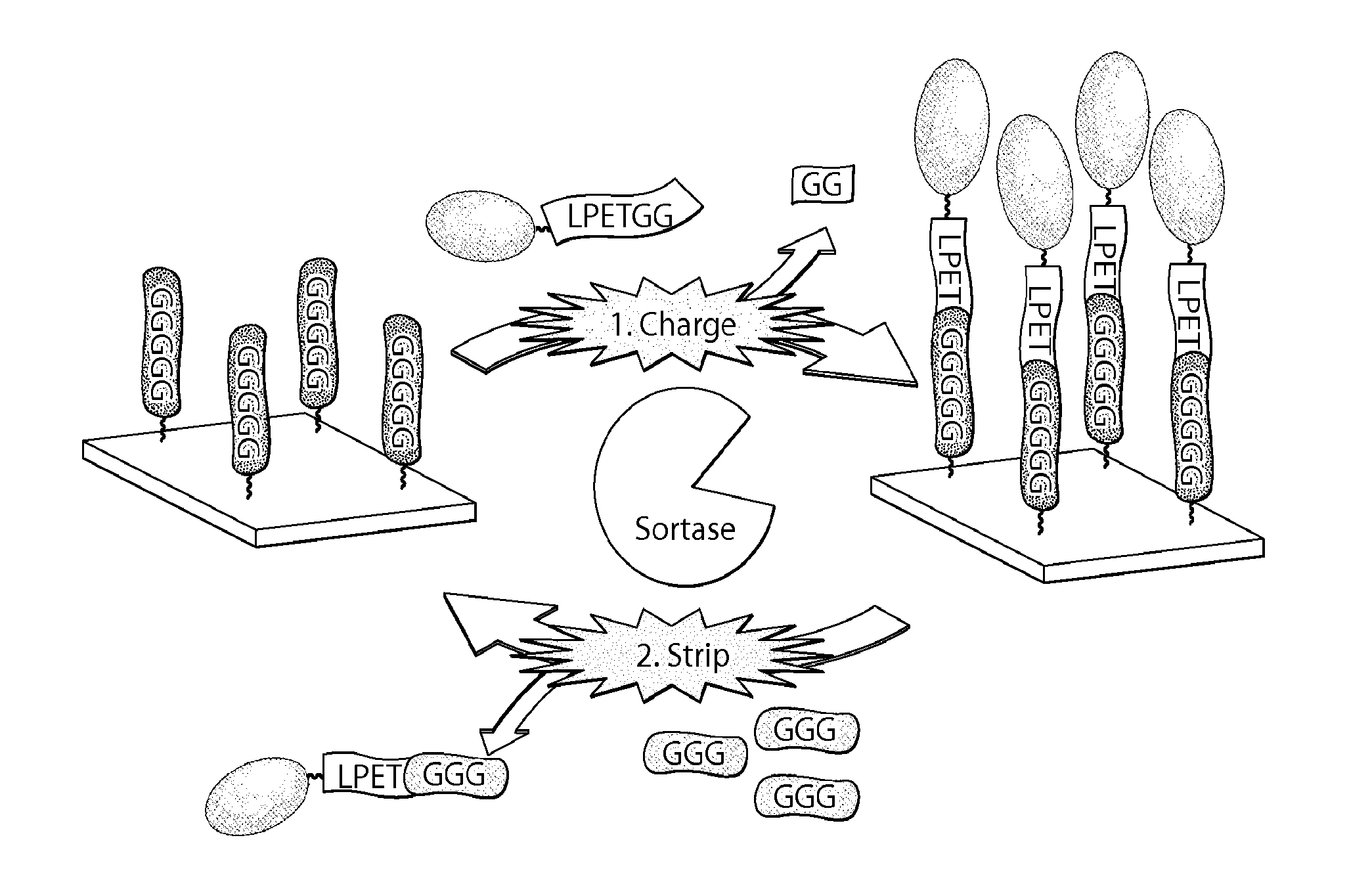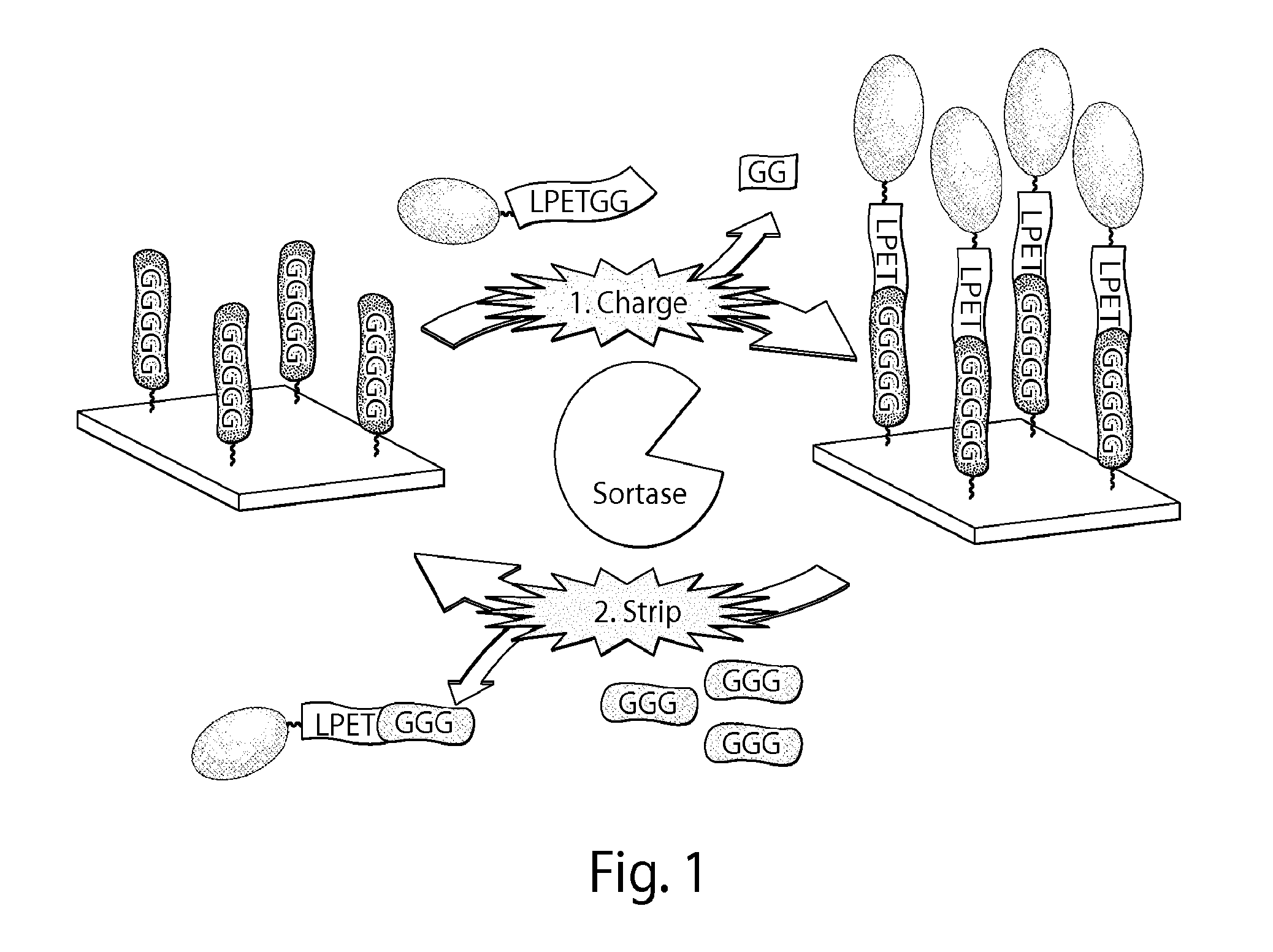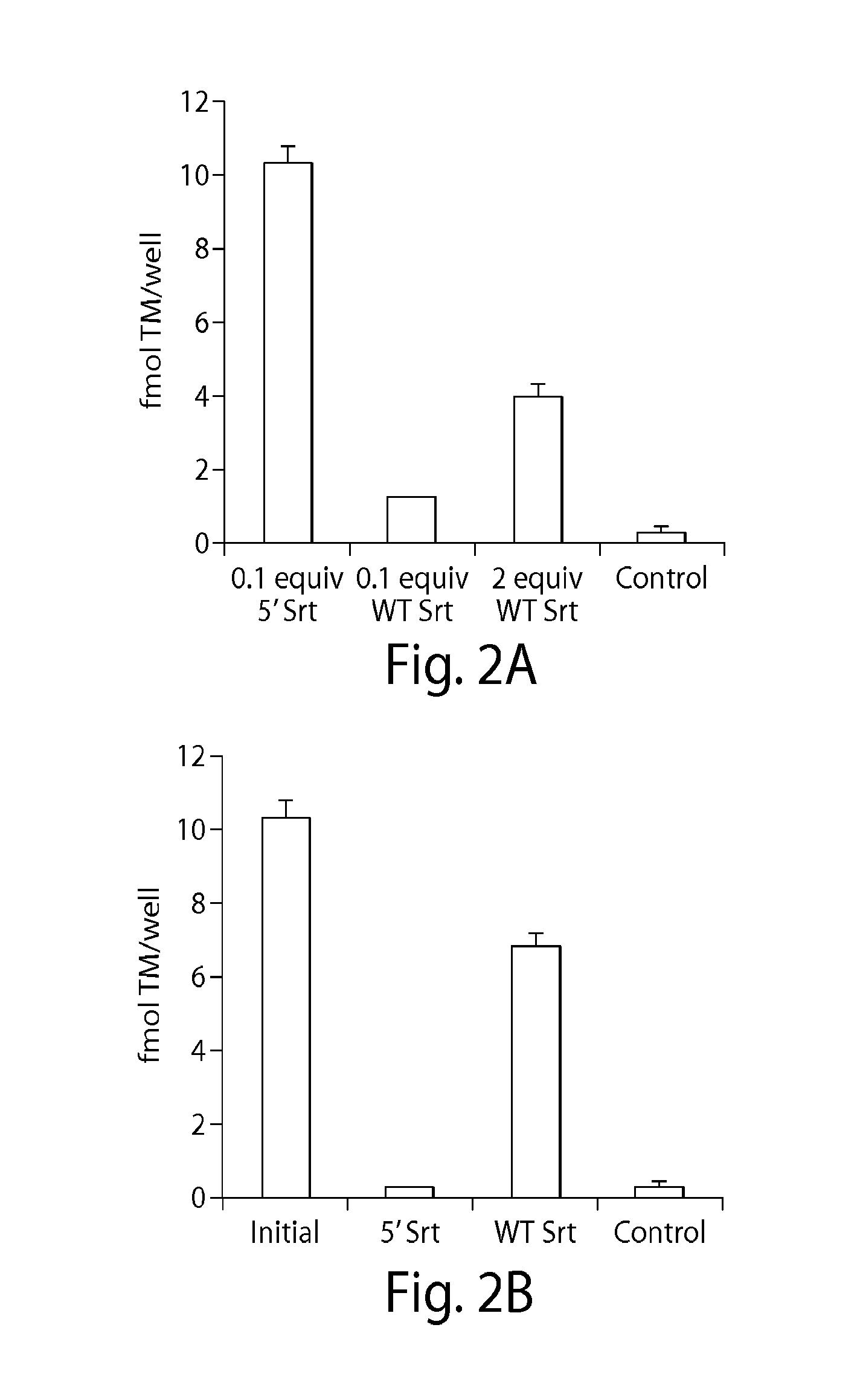Sortase-catalyzed immobilization, release, and replacement of functional molecules on solid surfaces
a technology of functional molecules and immobilization, applied in the direction of hydrolases, immobilised enzymes, packaged goods types, etc., can solve the problems of limited long-term performance of immobilized functional molecules, e.g., enzymes, etc., to facilitate site-specific immobilization of functional molecules, facilitate the regeneration of degraded functional molecules, and improve clinical performance of these devices
- Summary
- Abstract
- Description
- Claims
- Application Information
AI Technical Summary
Benefits of technology
Problems solved by technology
Method used
Image
Examples
example 1
Rechargeable Surface Immobilization of Thrombomodulin to Generate a Sustainable, Biologically Active Blood Compatible Material
[0109]Polyurethane catheters modified with surface pentaglycine peptide motifs were generated and LPETG (SEQ ID NO: 4)-tagged thrombomodulin TM was immobilized on the catheter surfaces via sortase-mediated transpeptidation. Subsequently, 5′ SrtA was used to catalyze multiple cycles of rapid assembly and removal of LPETG (SEQ ID NO: 4)-tagged TM on pentaglycine-modified surfaces. Finally, this rechargeable surface engineering platform was translated to perform in vivo modification of catheters with LPETG (SEQ ID NO: 4) tagged functional TM molecules.
[0110]The development of clinically durable artificial organ systems has been limited, in part, by the activation of coagulation and platelets at the blood-material interface. Despite advances in surgical techniques and antithrombotic pharmaceutical therapies, there remains a need for synthetic small diameter (<6 m...
example 2
Sortase-Catalyzed Modification of Polyurethane Catheters
[0118]Polyurethane catheters intended for cannulation in mice were functionalized with pentaglycine using a sequential scheme as described previously to immobilize azide-tagged pentaglycine peptides. Optimal reaction parameters that would maximize SrtA-catalyzed charging and subsequent stripping of TMLPETG on pentaglycine modified catheters were first determined ex vivo using a biotin-LPETG (SEQ ID NO: 4) probe. Fluorescent Cy3-labeled streptavidin was used to detect surface biotin, which was measured semi-quantitatively by image analysis.
[0119]Under in vitro conditions, optimal charging reaction parameters were determined to be a 30 minute reaction with 20 μM biotin-LPETG (SEQ ID NO: 4) with 2 μM 5′ SrtA (FIG. 6), and stripping parameters were 1 mM GGG peptide with 20 μM 5′ SrtA (FIGS. 7 and 8). Similar to trends observed for TMLPETG immobilization on model pentaglycine surfaces, a higher concentration of 5′ SrtA was required ...
example 3
Sortase-Catalyzed Rechargeable Surface Engineering In Vivo
[0120]To demonstrate our concept that bioactive surface could be regenerated in vivo, we carried out reversible modification of pentaglycine-modified catheters with biotin-LPETG (SEQ ID NO: 4) probe in mice (FIG. 9). Pentaglycine catheters were cannulated through the femoral vein and deployed about 1 cm into the vena cava as measured from the bifurcation point. Next, biotin-LPETG (SEQ ID NO: 4) and 5′ SrtA were injected intravenously via the catheter, and after reaction for 30 minutes to 1 hour the catheters were removed. Fluorescent Cy3-labeled streptavidin was used to detect surface biotin on modified catheters. The in vivo charging of pentaglycine modified catheters could be achieved using a dose of 50 μg biotin-LPETG (SEQ ID NO: 4) and 70 μg 5′ SrtA after 30 minutes (FIG. 10). To confirm SrtA-catalyzed stripping of immobilized probes in vivo, catheters functionalized with biotin-LPETG (SEQ ID NO: 4) were deployed in the v...
PUM
| Property | Measurement | Unit |
|---|---|---|
| Composition | aaaaa | aaaaa |
| Cell adhesion | aaaaa | aaaaa |
Abstract
Description
Claims
Application Information
 Login to View More
Login to View More - R&D
- Intellectual Property
- Life Sciences
- Materials
- Tech Scout
- Unparalleled Data Quality
- Higher Quality Content
- 60% Fewer Hallucinations
Browse by: Latest US Patents, China's latest patents, Technical Efficacy Thesaurus, Application Domain, Technology Topic, Popular Technical Reports.
© 2025 PatSnap. All rights reserved.Legal|Privacy policy|Modern Slavery Act Transparency Statement|Sitemap|About US| Contact US: help@patsnap.com



